UNESCO World Heritage: Villages of Saxon Fortified Churches Analysis
VerifiedAdded on 2023/06/08
|8
|677
|128
Presentation
AI Summary
This presentation provides an overview of the Villages of Saxon Fortified Churches in Transylvania, Romania, a UNESCO World Heritage Site. It explains the reasons for its selection, highlighting its historical and architectural significance as a defensive system built between the 13th and 16th centuries. The presentation details the cultural importance and preservation efforts, focusing on the unique military advantages incorporated into the churches, such as thick walls and storage rooms. It concludes by emphasizing the role of UNESCO in preserving cultural sites and the importance of the Saxon fortified churches as a World Heritage site. References to academic articles are included to support the analysis.

World Heritage
Sites
Names and IDs of the group members
Sites
Names and IDs of the group members
Paraphrase This Document
Need a fresh take? Get an instant paraphrase of this document with our AI Paraphraser
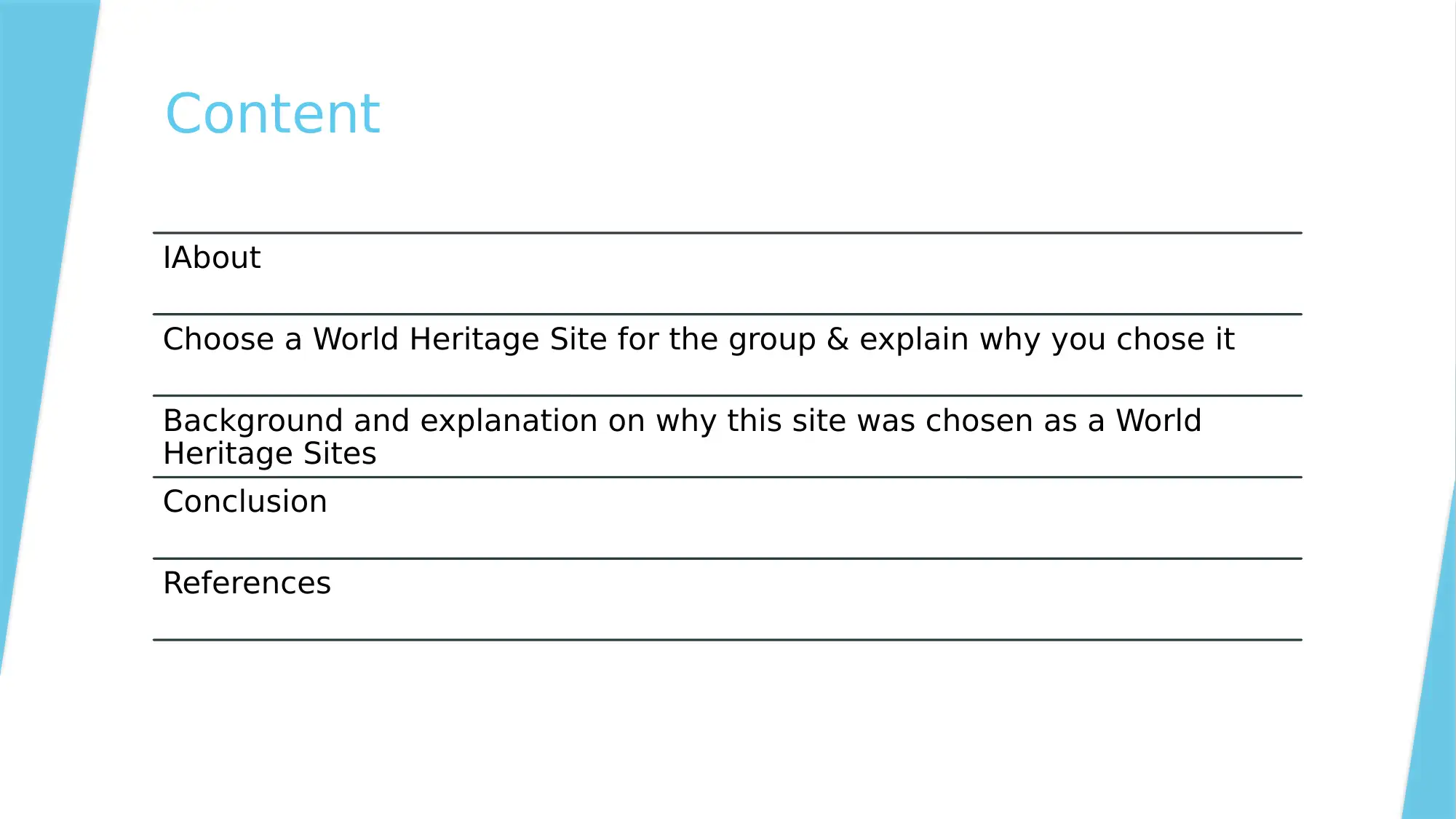
Content
IAbout
Choose a World Heritage Site for the group & explain why you chose it
Background and explanation on why this site was chosen as a World
Heritage Sites
Conclusion
References
IAbout
Choose a World Heritage Site for the group & explain why you chose it
Background and explanation on why this site was chosen as a World
Heritage Sites
Conclusion
References
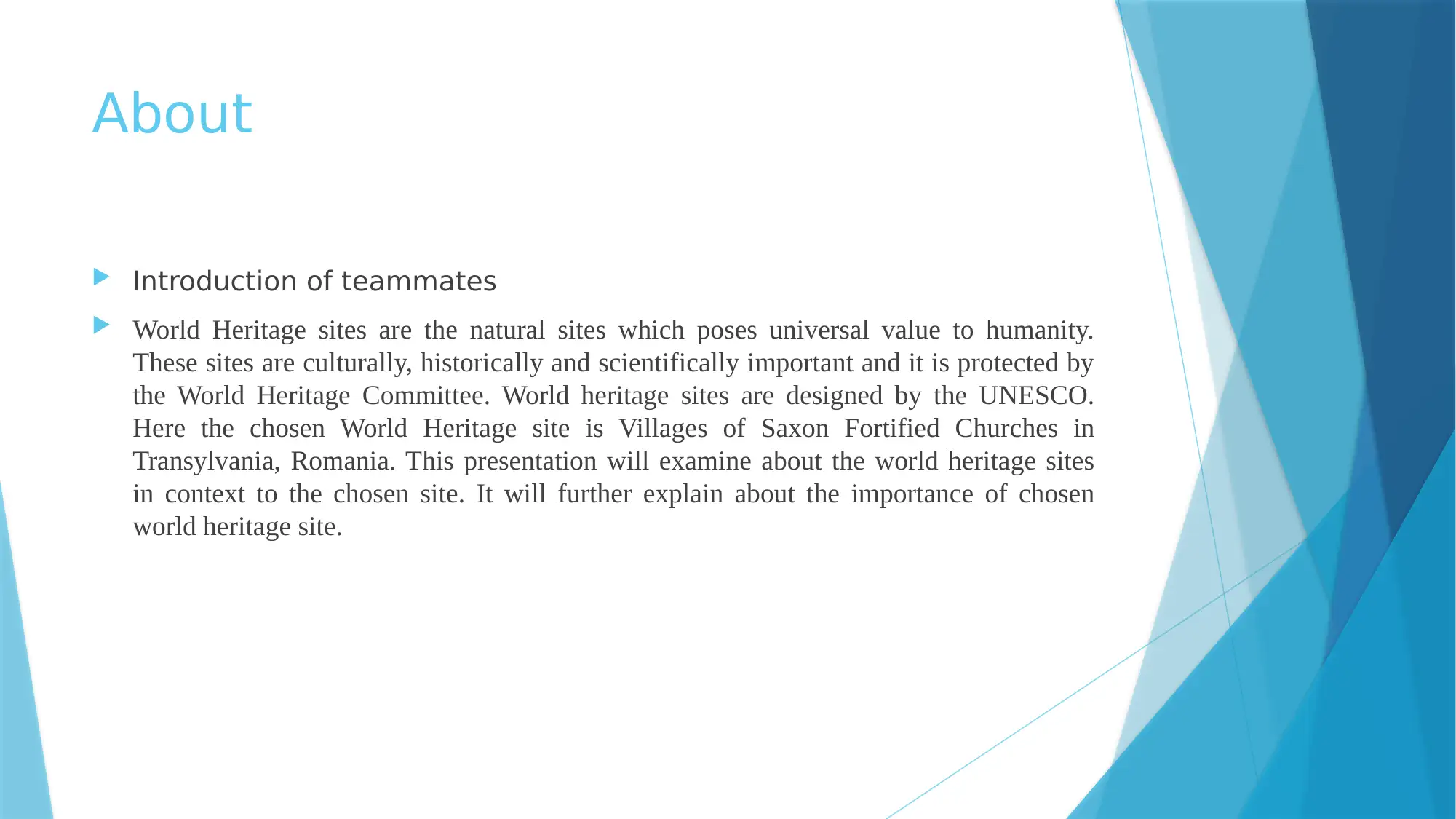
About
Introduction of teammates
World Heritage sites are the natural sites which poses universal value to humanity.
These sites are culturally, historically and scientifically important and it is protected by
the World Heritage Committee. World heritage sites are designed by the UNESCO.
Here the chosen World Heritage site is Villages of Saxon Fortified Churches in
Transylvania, Romania. This presentation will examine about the world heritage sites
in context to the chosen site. It will further explain about the importance of chosen
world heritage site.
Introduction of teammates
World Heritage sites are the natural sites which poses universal value to humanity.
These sites are culturally, historically and scientifically important and it is protected by
the World Heritage Committee. World heritage sites are designed by the UNESCO.
Here the chosen World Heritage site is Villages of Saxon Fortified Churches in
Transylvania, Romania. This presentation will examine about the world heritage sites
in context to the chosen site. It will further explain about the importance of chosen
world heritage site.
⊘ This is a preview!⊘
Do you want full access?
Subscribe today to unlock all pages.

Trusted by 1+ million students worldwide
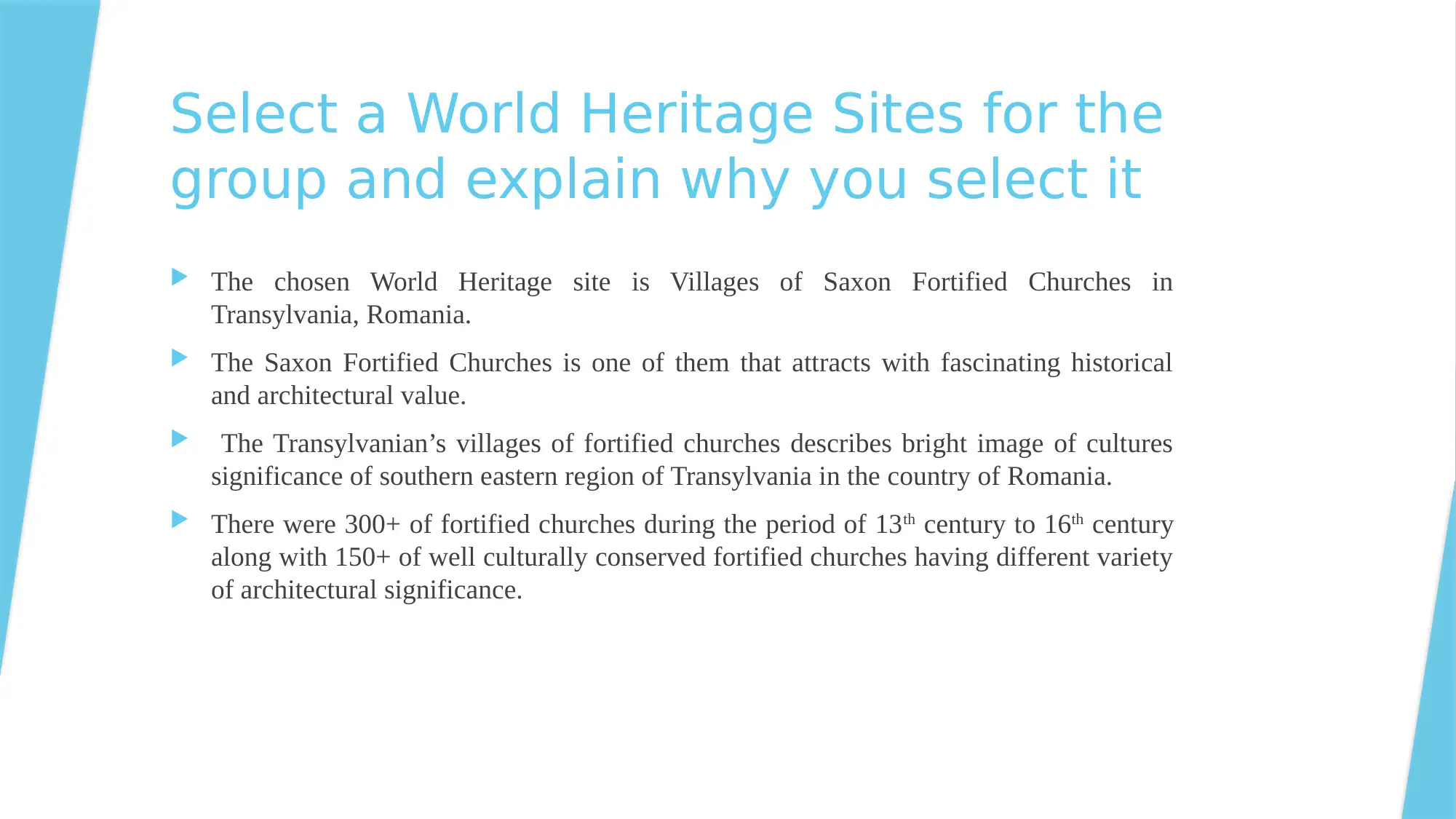
Select a World Heritage Sites for the
group and explain why you select it
The chosen World Heritage site is Villages of Saxon Fortified Churches in
Transylvania, Romania.
The Saxon Fortified Churches is one of them that attracts with fascinating historical
and architectural value.
The Transylvanian’s villages of fortified churches describes bright image of cultures
significance of southern eastern region of Transylvania in the country of Romania.
There were 300+ of fortified churches during the period of 13th century to 16th century
along with 150+ of well culturally conserved fortified churches having different variety
of architectural significance.
group and explain why you select it
The chosen World Heritage site is Villages of Saxon Fortified Churches in
Transylvania, Romania.
The Saxon Fortified Churches is one of them that attracts with fascinating historical
and architectural value.
The Transylvanian’s villages of fortified churches describes bright image of cultures
significance of southern eastern region of Transylvania in the country of Romania.
There were 300+ of fortified churches during the period of 13th century to 16th century
along with 150+ of well culturally conserved fortified churches having different variety
of architectural significance.
Paraphrase This Document
Need a fresh take? Get an instant paraphrase of this document with our AI Paraphraser
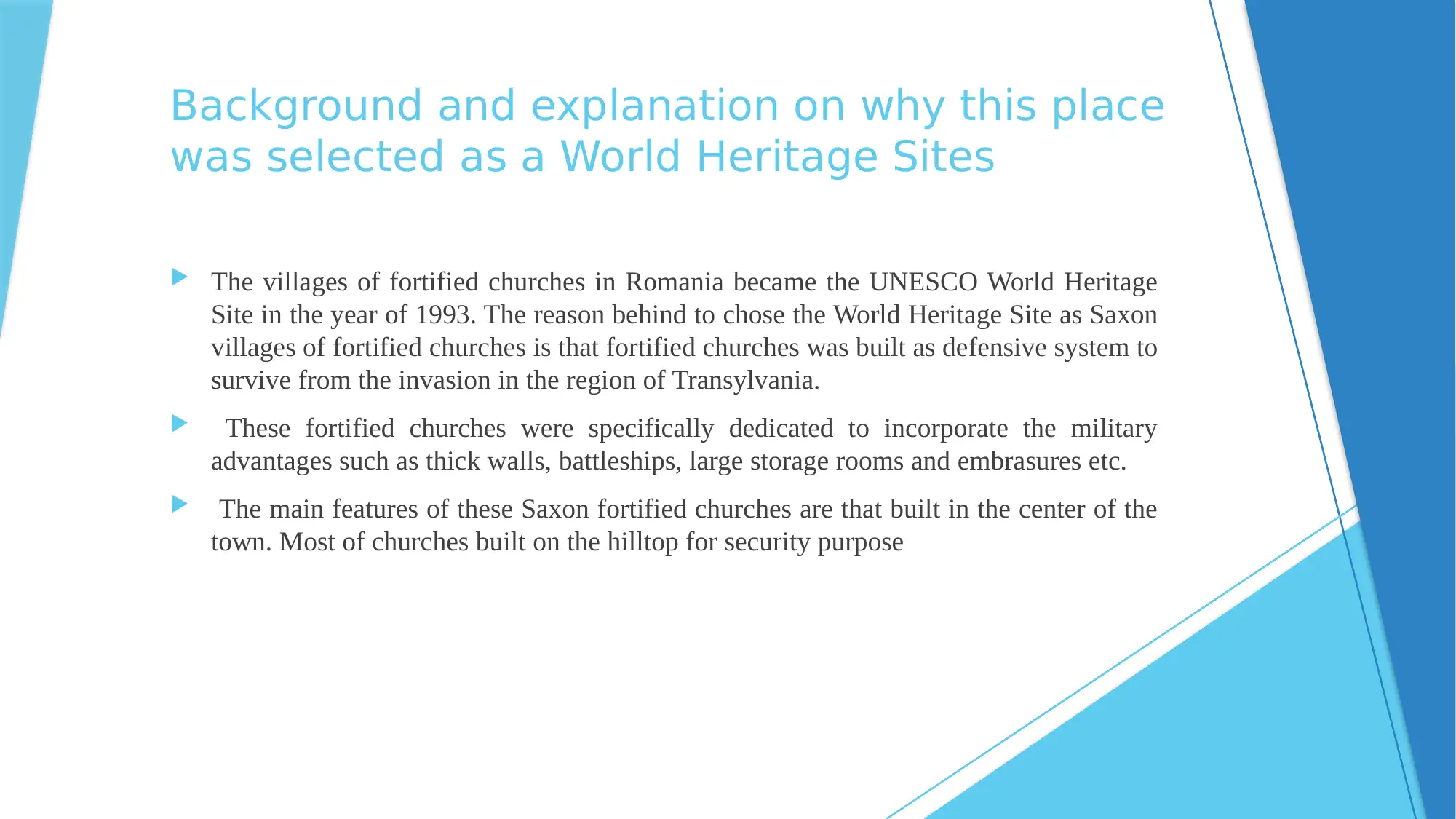
Background and explanation on why this place
was selected as a World Heritage Sites
The villages of fortified churches in Romania became the UNESCO World Heritage
Site in the year of 1993. The reason behind to chose the World Heritage Site as Saxon
villages of fortified churches is that fortified churches was built as defensive system to
survive from the invasion in the region of Transylvania.
These fortified churches were specifically dedicated to incorporate the military
advantages such as thick walls, battleships, large storage rooms and embrasures etc.
The main features of these Saxon fortified churches are that built in the center of the
town. Most of churches built on the hilltop for security purpose
was selected as a World Heritage Sites
The villages of fortified churches in Romania became the UNESCO World Heritage
Site in the year of 1993. The reason behind to chose the World Heritage Site as Saxon
villages of fortified churches is that fortified churches was built as defensive system to
survive from the invasion in the region of Transylvania.
These fortified churches were specifically dedicated to incorporate the military
advantages such as thick walls, battleships, large storage rooms and embrasures etc.
The main features of these Saxon fortified churches are that built in the center of the
town. Most of churches built on the hilltop for security purpose
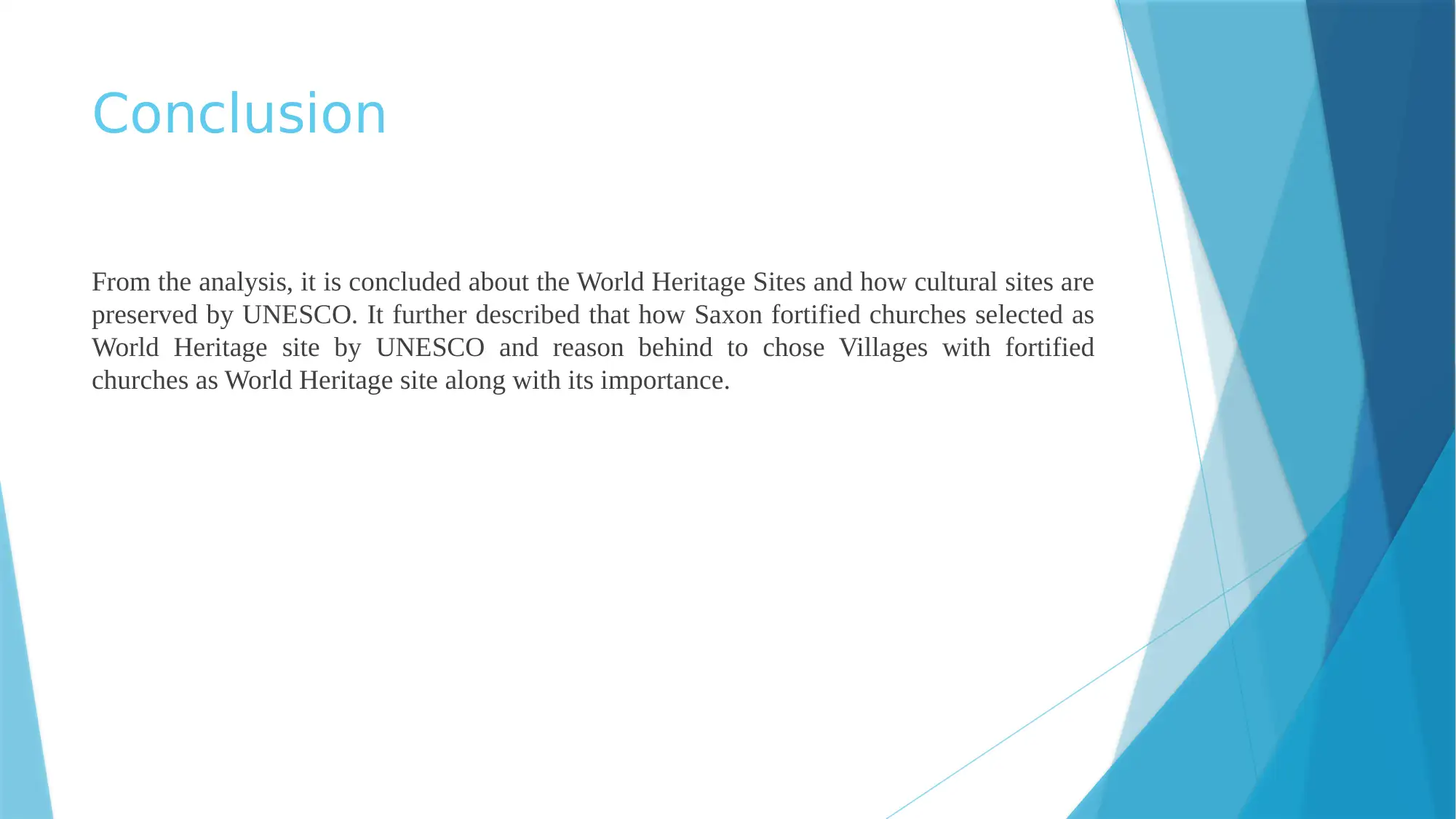
Conclusion
From the analysis, it is concluded about the World Heritage Sites and how cultural sites are
preserved by UNESCO. It further described that how Saxon fortified churches selected as
World Heritage site by UNESCO and reason behind to chose Villages with fortified
churches as World Heritage site along with its importance.
From the analysis, it is concluded about the World Heritage Sites and how cultural sites are
preserved by UNESCO. It further described that how Saxon fortified churches selected as
World Heritage site by UNESCO and reason behind to chose Villages with fortified
churches as World Heritage site along with its importance.
⊘ This is a preview!⊘
Do you want full access?
Subscribe today to unlock all pages.

Trusted by 1+ million students worldwide
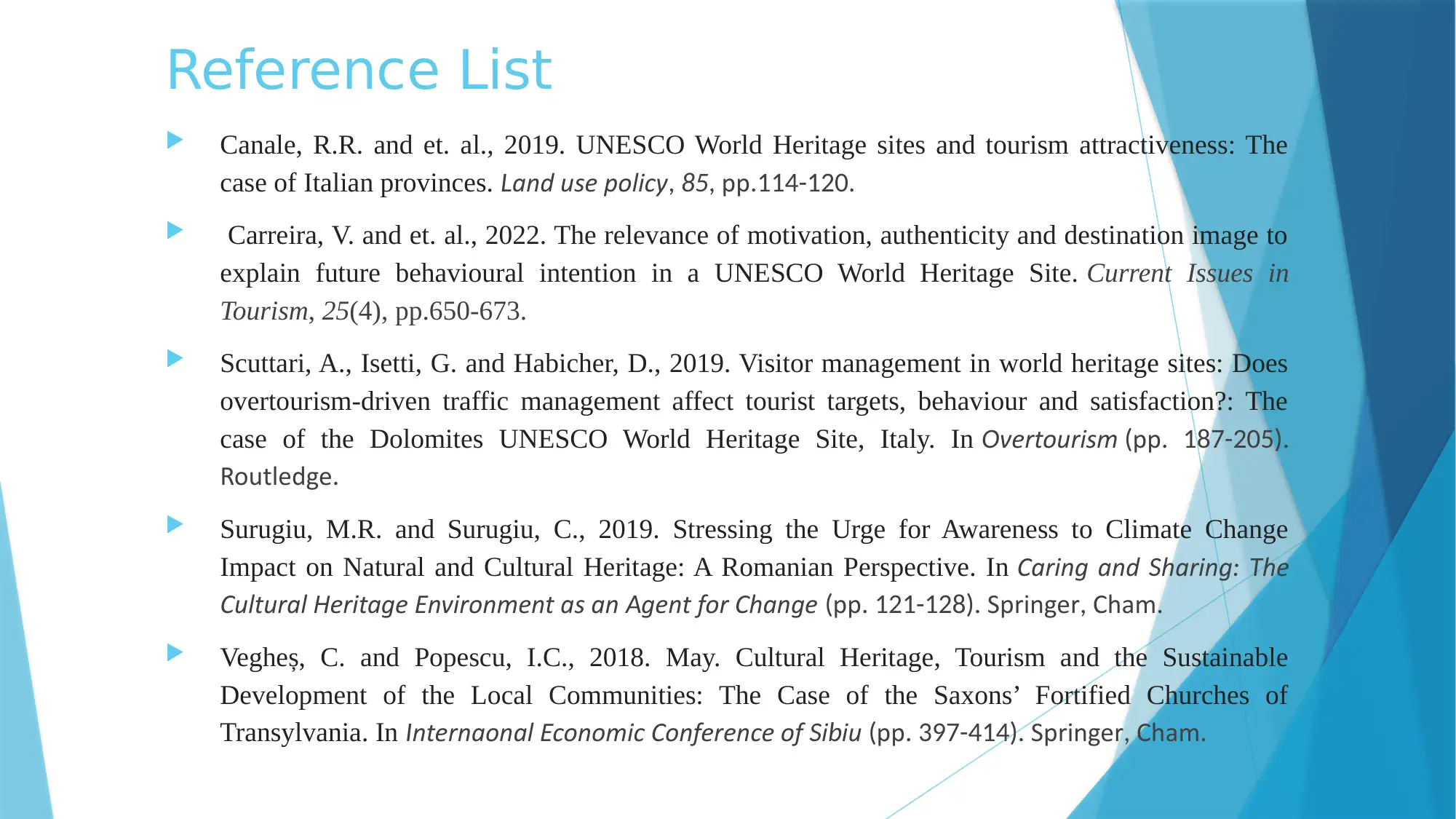
Reference List
Canale, R.R. and et. al., 2019. UNESCO World Heritage sites and tourism attractiveness: The
case of Italian provinces. and use policyL , 85 pp, .114-120.
Carreira, V. and et. al., 2022. The relevance of motivation, authenticity and destination image to
explain future behavioural intention in a UNESCO World Heritage Site. Current Issues in
Tourism, 25(4), pp.650-673.
Scuttari, A., Isetti, G. and Habicher, D., 2019. Visitor management in world heritage sites: Does
overtourism-driven traffic management affect tourist targets, behaviour and satisfaction?: The
case of the Dolomites UNESCO World Heritage Site, Italy. In vertourismO pp( . 187-205).
Routledge.
Surugiu, M.R. and Surugiu, C., 2019. Stressing the Urge for Awareness to Climate Change
Impact on Natural and Cultural Heritage: A Romanian Perspective. In Caring and haring heS : T
Cultural Heritage Environment as an gent for ChangeA pp Springer Cham( . 121-128). , .
Vegheș, C. and Popescu, I.C., 2018. May. Cultural Heritage, Tourism and the Sustainable
Development of the Local Communities: The Case of the Saxons’ Fortified Churches of
Transylvania. In nternational Economic Conference of i iuI S b pp Springer Cham( . 397-414). , .
Canale, R.R. and et. al., 2019. UNESCO World Heritage sites and tourism attractiveness: The
case of Italian provinces. and use policyL , 85 pp, .114-120.
Carreira, V. and et. al., 2022. The relevance of motivation, authenticity and destination image to
explain future behavioural intention in a UNESCO World Heritage Site. Current Issues in
Tourism, 25(4), pp.650-673.
Scuttari, A., Isetti, G. and Habicher, D., 2019. Visitor management in world heritage sites: Does
overtourism-driven traffic management affect tourist targets, behaviour and satisfaction?: The
case of the Dolomites UNESCO World Heritage Site, Italy. In vertourismO pp( . 187-205).
Routledge.
Surugiu, M.R. and Surugiu, C., 2019. Stressing the Urge for Awareness to Climate Change
Impact on Natural and Cultural Heritage: A Romanian Perspective. In Caring and haring heS : T
Cultural Heritage Environment as an gent for ChangeA pp Springer Cham( . 121-128). , .
Vegheș, C. and Popescu, I.C., 2018. May. Cultural Heritage, Tourism and the Sustainable
Development of the Local Communities: The Case of the Saxons’ Fortified Churches of
Transylvania. In nternational Economic Conference of i iuI S b pp Springer Cham( . 397-414). , .
Paraphrase This Document
Need a fresh take? Get an instant paraphrase of this document with our AI Paraphraser

Thank You!
Any Questions
or Comments?
Any Questions
or Comments?
1 out of 8
Related Documents
Your All-in-One AI-Powered Toolkit for Academic Success.
+13062052269
info@desklib.com
Available 24*7 on WhatsApp / Email
![[object Object]](/_next/static/media/star-bottom.7253800d.svg)
Unlock your academic potential
Copyright © 2020–2025 A2Z Services. All Rights Reserved. Developed and managed by ZUCOL.




